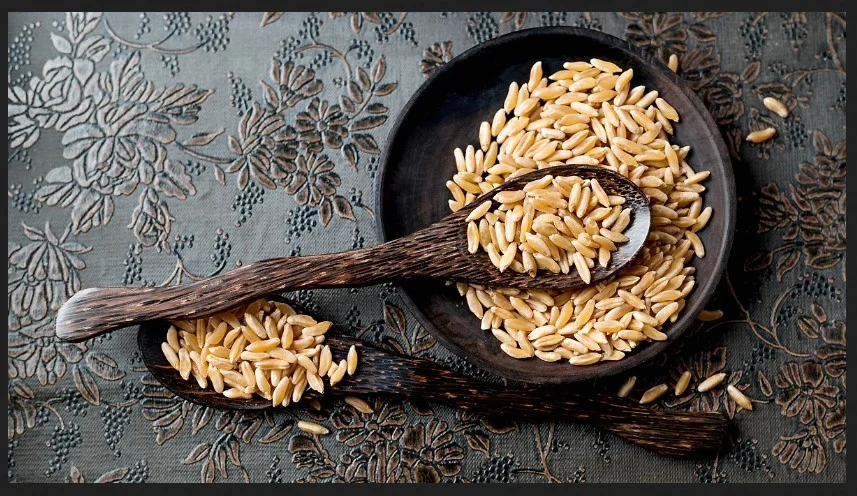Cassasse, a versatile and nutritious plant, has been valued for centuries for its wide array of uses and benefits. Known for its resilience and adaptability, this plant thrives in various climates and soils, making it a staple in many cultures around the world. Understanding Cassasse begins with exploring its botanical profile and historical significance.
Table of Contents
ToggleThe Botanical Profile of Cassasse
Cassasse, scientifically known as Manihot esculenta, belongs to the Euphorbiaceae family. The plant’s adaptability to different climates and soil conditions contributes to its widespread cultivation and use.
Historical Significance of Cassasse
Cassasse has a rich history that dates back to ancient civilizations. Indigenous peoples of the Amazon rainforest have long relied on Cassasse as a primary food source, utilizing both its leaves and roots. Today, Cassasse remains an essential part of the diet and economy in many tropical and subtropical regions.
Nutritional Value of Cassasse
One of the key reasons for Cassasse’s prominence in various cultures is its impressive nutritional profile. It is a valuable source of energy and essential nutrients, making it a crucial component of diets in many developing countries.
Vitamins and Minerals in Cassasse
Cassasse is rich in several important vitamins and minerals. It contains significant amounts of vitamin C, which is essential for immune function and skin health. Additionally, it provides B vitamins, including folate, which is vital for DNA synthesis and repair. Cassasse also offers minerals such as potassium, which helps regulate blood pressure, and magnesium, which is crucial for muscle and nerve function.
Caloric Content of Cassasse
Cassasse is an excellent source of carbohydrates, providing a high caloric content that makes it a staple food in many regions. Its starchy roots are particularly valued for their energy density, which is essential for populations with limited access to other caloric sources. This makes Cassasse an important crop for food security in areas prone to food shortages.
Health Benefits of Cassasse
The health benefits of Cass asse extend beyond its nutritional value. Its various properties contribute to overall well-being and can help prevent and manage several health conditions.
Antioxidant Properties
Cass asse contains antioxidants, which help combat oxidative stress and reduce the risk of chronic diseases. These compounds neutralize free radicals in the body, protecting cells from damage and inflammation.
Benefits for Digestion
Cass asse is high in dietary fiber, which promotes healthy digestion and prevents constipation. The fiber content also aids in regulating blood sugar levels, making Cass asse a good food choice for individuals with diabetes.
Cardiovascular Health
The potassium content in Cass asse helps maintain healthy blood pressure levels, reducing the risk of hypertension and associated cardiovascular diseases. Furthermore, its fiber content supports heart health by lowering cholesterol levels.
Boosting Immune System
Vitamin C in Cass asse plays a crucial role in enhancing immune function. Regular consumption of Cass asse can help strengthen the body’s defenses against infections and illnesses.
Cassasse in Traditional Medicine
Throughout history, Cass asse has been utilized in traditional medicine for its therapeutic properties. Its use spans various cultures and continues to be a part of modern herbal medicine.
Ancient Uses of Cassasse
In traditional Amazonian medicine, Cass asse was used to treat a variety of ailments, from digestive disorders to skin conditions. The leaves and roots were often prepared as poultices or decoctions to relieve pain and inflammation.
Modern Applications in Herbal Medicine
Today, herbalists and naturopaths recognize the benefits of Cass asse for treating conditions such as arthritis, gastrointestinal issues, and immune deficiencies. Its natural compounds are studied for their potential to complement conventional medical treatments. Modern research supports its use in reducing inflammation, boosting immunity, and aiding digestion, making it a valuable addition to herbal pharmacopeia.
Culinary Uses of Cassasse
Cass asse is a versatile ingredient in the kitchen, used in both traditional and modern recipes. Its mild flavor and starchy texture make it suitable for a variety of dishes.
Traditional Dishes Using Cassasse
In many cultures, Cass asse is a staple ingredient in traditional dishes. Another popular dish is cassava bread, a flatbread made from grated and dried Cassasse root. These traditional preparations highlight the plant’s adaptability and importance in regional cuisines.
Modern Recipes Featuring Cassasse
Cassasse’s culinary potential extends to contemporary cuisine. Modern chefs experiment with Cassasse in gourmet dishes, creating innovative recipes that showcase its versatility. Its mild taste allows it to blend well with various flavors, making it a favorite ingredient for health-conscious cooks.
Cultivation and Harvesting of Cassasse
Growing Cass asse requires knowledge of its ideal conditions and effective farming practices. Proper cultivation techniques ensure a bountiful harvest and high-quality produce.
Ideal Growing Conditions
Cass asse thrives in tropical and subtropical climates with well-drained soil. It prefers warm temperatures and can tolerate periods of drought, making it suitable for regions with variable weather patterns. Proper soil preparation and the use of organic fertilizers can enhance growth and yield. Planting Cass asse in loose, sandy soil helps its roots develop fully, while regular watering, especially during dry spells, ensures healthy growth.
Harvesting Techniques
Harvesting Cass asse typically occurs 8 to 12 months after planting. Proper handling and storage are crucial to maintain the quality and nutritional value of the produce.
Pest Control and Disease Management
Effective pest control and disease management practices are essential for healthy Cassasse crops. Integrated pest management (IPM) strategies, including biological control methods and resistant varieties, help minimize losses and ensure sustainable production. Common pests like the cassava mealybug and diseases such as cassava mosaic virus can significantly affect yield. Implementing crop rotation, using resistant plant varieties, and employing natural predators are effective ways to manage these challenges.
Economic Importance of Cassasse
Cass asse plays a significant role in the economies of many countries, providing income and employment opportunities.
Cass asse in Local Economies
In regions where Cass asse is a staple crop, it supports the livelihoods of small-scale farmers and contributes to food security. Its resilience and adaptability make it a reliable source of income, particularly in rural areas. Local markets often feature Cass asse in various forms, from fresh roots to processed products like flour and chips. This local trade supports community economies and provides a steady income stream for farmers.
Global Market Trends
The global demand for Cass asse and its derivatives is on the rise. Cass asse products such as flour, starch, and ethanol are increasingly popular in international markets. This trend highlights the potential for economic growth and development through Cass asse cultivation and processing. Countries like Thailand, Nigeria, and Brazil are major exporters of Cassasse products, contributing significantly to their economies. The versatility of Cassasse as a raw material for food, industrial, and biofuel applications drives its growing global market.
Environmental Impact of Cassasse Cultivation
Sustainable farming practices are crucial to minimize the environmental impact of Cass asse cultivation. Ensuring the health of the soil and surrounding ecosystems is essential for long-term agricultural success.
Sustainable Farming Practices
Implementing sustainable farming practices, such as crop rotation, organic fertilization, and conservation tillage, helps maintain soil fertility and reduce environmental degradation. These practices also enhance the resilience of Cassasse crops to climate change. By avoiding the overuse of chemical fertilizers and pesticides, farmers can protect the soil and surrounding environment. Additionally, using cover crops and practicing agroforestry can improve soil health and biodiversity.
Impact on Soil Health
Cass asse cultivation can improve soil health by preventing erosion and promoting biodiversity. Its extensive root system helps stabilize the soil, and its ability to grow in poor soils reduces the need for chemical inputs. The plant’s deep roots improve soil structure and water infiltration, making the soil more fertile over time. Additionally, Cass asse cultivation often requires minimal tillage, which helps preserve soil organic matter and reduces erosion.
Cassasse as a Superfood
Cass asse is increasingly recognized as a superfood due to its nutritional benefits and versatility. Its potential for improving diets and health worldwide is gaining attention.
Comparison with Other Superfoods
Compared to other superfoods, Cass asse offers a unique combination of carbohydrates, vitamins, and minerals. Its affordability and availability make it an accessible option for improving nutrition in various populations. Unlike some superfoods that are expensive or hard to find, Cass asse is widely available and affordable, making it a practical choice for enhancing dietary quality. Its rich content of vitamin C, fiber, and essential minerals positions it alongside other recognized superfoods like quinoa, chia seeds, and kale.
Future Potential of Cassasse
The future potential of Cass asse lies in its ability to address global food security and nutrition challenges. Continued research and development can enhance its benefits and applications, making it a vital crop for sustainable development. Innovations in cultivation techniques, processing methods, and product development can expand the uses of Cass asse. For instance, breeding programs aimed at improving yield, disease resistance, and nutritional content could make Cass asse an even more valuable crop. Its potential use in biofuels and biodegradable materials also presents exciting possibilities for sustainable industries.
Conclusion
Cass asse is a remarkable plant with a rich history, diverse uses, and significant nutritional benefits. Its resilience and adaptability make it a valuable crop for food security and economic development in many regions. As a superfood, Cass asse offers a unique blend of nutrients that support overall health and well-being. Sustainable cultivation practices and modern applications in medicine and cuisine continue to enhance its value and potential. By understanding and harnessing the benefits of Cass asse, we can contribute to a healthier, more sustainable future.
Frequently Asked Questions about Cassasse
What is Cassasse?
Cassasse is a starchy root vegetable that is widely cultivated in tropical and subtropical regions.
How do you cook Cassasse?
Cassasse can be boiled, baked, or fried. It is often used in traditional dishes and can be processed into flour, starch, or chips.
What are the health benefits of Cassasse?
Cassasse is rich in vitamins, minerals, and fiber. It offers health benefits such as improved digestion, enhanced immune function, and cardiovascular health.
Is Cassasse safe to eat?
Yes, Cassasse is safe to eat when properly prepared. It is important to cook it thoroughly to remove naturally occurring toxins that can be harmful if consumed in large amounts.
Can Cassasse be used as a gluten-free alternative?
Yes, Cassasse flour is a popular gluten-free alternative used in baking and cooking. It is suitable for people with celiac disease or gluten intolerance.
Where is Cassasse commonly grown?
Cassasse is commonly grown in tropical and subtropical regions, including South America, Africa, and Southeast Asia. Countries like Nigeria, Thailand, and Brazil are among the largest producers.





